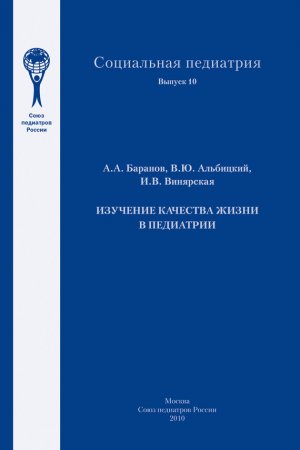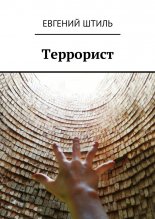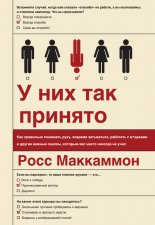»зучение качества жизни в педиатрии Ѕаранов јлександр

182.†McSweeny A.J., Grant I., Heaton R. K. et al. Life quality of patients with chronic obstructive pulmonary disease // Arch. Intern. Med.†Ц 1982.†Ц V. 142.†Ц P.†473Ц478.
183.†Nikishina I., Ruperto N., Kuzmina N. et al. The Russian version of the Childhood Health Assessment Questionnaire (CHAQ) and the Child Health Questionnaire (CHQ) // Clin. Exp. Rheumatol.†Ц 2001.†Ц V. 19, є†23.†Ц P.†131Ц135.
184.†Norrby U., Nordholm L., Andersson-Gare B. Health-related quality of life in children diagnosed with asthma, diabetes, juvenile chronic arthritis or short stature // Acta Paediatr.†Ц 2006.†Ц V. 95, є†4.†Ц P.†450Ц456.
185.†Petersen C., Schmidt S., Power M. et al. Development and pilottesting of a health-related quality of life chronic generic module for children and adolescents with chronic health conditions: a†European perspective // Qual. Life Res.†Ц 2005.†Ц V. 14, є†4.†Ц P.†1065Ц1077.
186.†Raat H., Mohangoo A. D., Grootenhuis M. A. Pediatric health-related quality of life questionnaires in clinical trials // Curr. Opin. Allergy Clin. Immunol.†Ц 2006.†Ц V. 6, є†3.†Ц P.†180Ц185.
187.†Rajmil L., Alonso J., Berra S. et al. Use of a children questionnaire of health-related quality of life (KIDSCREEN) as a measure of needs for health care services // J. Adolesc. Health.†Ц 2006.†Ц V. 38, є†5.†Ц P.†511Ц518.
188.†Rajmil L., Herdman M., Fernandez de Sanmamed M.J. et al. Generic health-related quality of life instruments in children and adolescents: a†qualitative analysis of content //J. Adolesc. Health.†Ц 2004.†Ц V. 34, є†1.†Ц P.†37Ц45.
189.†Ravens-Sieberer U. Special aspects of the quality of life of children // Dtsch Med. Wochenschr.†Ц 2006.†Ц V. 12, є†131.†Ц P.†27Ц30.
190.†Ravens-Sieberer U., Auquier P., Erhart M. et al. The European KIDSCREEN Group The KIDSCREEN-27 quality of life measure for children and adolescents: psychometric results from a cross-cultural survey in 13 European countries // Qual. Life Res.†Ц 2007.†Ц V. 16.†Ц P.†1347Ц1356.
191.†Ravens-Sieberer U., Bullinger M. Assessing health-related quality of life in chronically ill children with the German KINDL: first psychometric and content analytical results // Qual. Life Res.†Ц 1998.†Ц V. 7.†Ц P.†399Ц407.
192.†Ravens-Sieberer U., Heikmann M., Walleser S. Assessment of quality of life in young children with a computer assisted touch screen program (CATSCREEN) Ц reliability, validity and feasibility // Qual. Life Res.†Ц 2001,-V. 10, є†3.†Ц R 298.
193.†Robitail S., Simeoni M. C., Erhart M. et al. Validation of the European proxy KIDSCREEN-52 pilot test health-related quality of life questionnaire: first results // Adolesc. Health.†Ц 2006.†Ц V. 39, є†4.†Ц P. 596.
194.†Rodary C. Methodology for studying the quality of life of children in clinical research // Arch. Pediat.†Ц 2000.†Ц V. 7 (Suppl. 2).†Ц P.†230Ц232.
195.†Rosenbaum P, Saigal S. Measuring health-related quality of life in pediatric populations: conceptual issues. Quality of Life and Pharmaco-economics in clinical trials. Philadelphia, 1996.†Ц P.†785Ц791.
196.†Ruperto N., Ravelli A., Pistorio A. Cross-cultural adaptation and psychometric evaluation of the Childhood Health Assessment Questionnaire (CHAQ) and the Child Health Questionnaire (CHQ) in 32 countries. Review of the general methodology // Clin. Exp. Rheum.†Ц 2001,-V. 19, є†4.†Ц P.†1Ц9.
197.†Saigal S., Stoskopf B., PinelliJ. et al. Self-perceived health-related quality of life of former extremely low birth weight infants at young adulthood // Pediatrics.†Ц 2006.†Ц V. 118, є†3.†Ц P.†1140Ц1148.
198.†Seid M., Varni J.W., Cummings L. et al. The impact of realized access to care on health-related quality of life: a†two-year prospective cohort study of children in the California State ChildrenТs Health Insurance Program //J. Pediatr.†Ц 2006.†Ц V. 149, є†3.†Ц P.†354Ц361.
199.†Stam H., Hartman E. E., Deurloo J. A. et al. Young adult patients with a history of pediatric disease: impact on course of life and transition into adulthood //J. Adolesc. Health.†Ц 2006.†Ц V. 39, є†1.†Ц P.†4Ц13.
200.†Starfield ¬. Adolescent health status measurement: development of the Child Health and Illness Profile // Pediatrics.†Ц 1993.†Ц V. 91.†Ц P.†430Ц435.
201.†Svavarsdottir E. K., Orlygsdottir B. Health-related quality of life in Icelandic school children // Scand.J. Caring Sci.†Ц 2006.†Ц V. 20, є†2.-P.209Ц215.
202.†Theunissen N., Vogels T., Koopman H. The proxy problem: child report versus parent report in health-related quality of life research // Qual. Life Res.†Ц 1998.†Ц V. 7, є†5.†Ц P.†387Ц397.
203.†Thwaites M. A., Price M. S. ”меньшение бремени бронхиальной астмы: улучшение качества жизни пациентов // ѕульмонологи€.†Ц 1998.†Ц є†3.†Ц —.†19Ц23.
204.†Uzark ., Jones ., Burwinkle “. ћ. et al. The Pediatric Quality of Life InventoryЩ in children with heart disease // Progr. in Pediat. Cardiol.†Ц 2003.†Ц V. 18.†Ц P.†141Ц148.
205.†Vargus-Adams J. Longitudinal use of the Child Health Questionnaire in childhood cerebral palsy // Dev. Med. Child Neurol.†Ц 2006.†Ц V. 48, є†5.†Ц P.†343Ц347.
206.†Varni J. W., Burwinkle T. M. The PedsQL as a patient-reported outcome in children and adolescents with Attention-Deficit/Hyperactivity Disorder: a†population-based study // Health Qual. Life Outcomes.†Ц 2006.†Ц V. 21, є†4.†Ц P. 26.
207.†Varni J.W., Burwinkle T. M., Jacobs J. R. et al. The PedsQLЩ in Type 1 and Type 2 diabetes: Reliability and validity of the Pediatric Quality of Life InventoryЩ Generic Core Scales and Type 1 Diabetes Module // Diabetes Care.†Ц 2003.†Ц V. 26.†Ц P.†631Ц637.
208.†Varni J.W., Burwinkle T. M., Katz E. R. et al. The PedsQLЩ in pediatric cancer: Reliability and validity of the Pediatric Quality of Life InventoryЩ Generic Core Scales, Multidimensional Latigue Scale, and Cancer Module // Cancer.†Ц 2002.†Ц V. 94.†Ц P.†2090Ц2106.
209.†Varni J.W., Burwinkle T. M., RapoffM.A. et al. The PedsQLЩ in pediatric asthma: Reliability and validity of the Pediatric Quality of Life InventoryЩ Generic Core Scales and Asthma Module // J. Beh. Med.†Ц 2004.†Ц V. 27.†Ц P.†297Ц318.
210.†Varni J. W., Burwinkle T. M., Seid M. et al. The PedsQLЩ 4.0 as a pediatric population health measure: Leasibility, reliability, and validity // Ambul. Pediatrics.†Ц 2003.†Ц V. 3.†Ц P.†329Ц341.
211.†VarniJ.W., Burwinkle T. M., Seid M. The PedsQL 4.0 as a school population health measure: feasibility, reliability, and validity // Qual. Life Res.†Ц 2006.†Ц V. 15, є†2.†Ц P.†203Ц215.
212.†VarniJ.W., Burwinkle T.M., Sherman S.A. et al. Health-related quality of life of children and adolescents with cerebral palsy: hearing the voices of the children // Dev. Med. Child Neurol.†Ц 2005.†Ц V. 47, є†9.†Ц P.†592Ц597.
213.†VarniJ.W., Seid M., Knight T. S. et al. The PedsQLЩ in pediatric rheumatology: Reliability, validity, and responsiveness of the Pediatric Quality of Life InventoryЩ Generic Core Scales and Rheumatology Module // Arthr. and Rheum.†Ц 2002.†Ц V. 46.†Ц P.†714Ц725.
214.†VarniJ.W., Seid MДKnight T. S. et al. The PedsQLЩ 4.0 Generic Core Scales: Sensitivity, responsiveness, and impact on clinical decision-making//J. Behavioral Med.†Ц 2002.†Ц V. 25.†Ц P.†175Ц193.
215.†VarniJ.W., Seid M., Kurtin P. S. The PedsQL 4.0: reliability and validity of the Pediatric Quality of Life Inventory version 4.0 generic core scales in healthy and patient populations // Med. Care.†Ц 2001.†Ц V. 39.†Ц P.†800Ц812.
216.†VarniJ.W., Seid M., Rode C.A. The PedsQLЩ: Measurement model for the Pediatric Quality of Life InventoryЩ // Med. Care.†Ц 1999.†Ц V. 37.†Ц P.†126Ц139.
217.†Ventegodt S., Merrick J. Lifestyle, quality of life, and health // Scientific World Journal.†Ц 2003.†Ц V. 22, є†3.†Ц P.†811Ц825.
218.†Verrips E. G., Vogels T, Koopman H. M. et al. Measuring health-related quality of life in a child population // Eur.J. Public Health.†Ц 1999.†Ц V. 9.†Ц P.†188Ц193.
219.†Vijayakumar V., John R. K., Datta D. et al. Quality of life after community-based rehabilitation for blind persons in a rural population of South India // Indian J. Ophthalmol.†Ц 2004.†Ц V. 52, є†4.†Ц P.†331Ц335.
220.†Vogels T. Measuring health-related quality of life in children: the development of the TACQOL-parent form // Qual. Life Res.†Ц 1998.†Ц V. 7, є†5.†Ц P.†457Ц465.
221.†Von Rueden U., Gosch A., Rajmil L. et al. Socioeconomic determinants of health related quality of life in childhood and adolescence: results from a European study //J. Epidemiol. Community Health.†Ц 2006.†Ц V. 60, є†2.†Ц P.†130Ц135.
222.†Wallander J. L., Schmitt M., Koot H. M. Quality of life measurement in children and adolescents: issues, instruments, and applications // J. Clin. Psychol.†Ц 2001. -V. 57, є†4.†Ц P.†571Ц585.
223.†WareJ.E. Standards for validating health measures: Definition and content //J. Chron. Dis.†Ц 1987.†Ц V. 40.†Ц P.†473Ц480.
224.†Wenger N. K., Mattson M. E., Furberg C. D. et al. Assessment of quality of life in clinical trials of cardiovascular therapies // Amer.J. Cardiol.†Ц 1984.-V. 54.-P.908Ц913.
225.†World Health Organization Constitution.†Ц Geneva: Basic Documents, 1948.
226.†Wysocki T., Gavin L. Paternal involvement in the management of pediatric chronic diseases: associations with adherence, quality of life, and health status //J. Pediatr. Psychol.†Ц 2006.†Ц V. 31, є†5.†Ц P.†501Ц511.






